Posted on
After over 7 years of primarily using Google’s suite of productivity tools, I recently found myself thrown back into a Microsoft-first world. It has not been a pleasant experience.
I was once a Microsoft power user. I could build Word and Excel documents with the best of them. And Outlook… I had all the keyboard commands memorized and was an early adopter of Inbox Zero. Arguably, the product has changed quite a bit since that time—circa Windows XP.
Summing up the biggest difference in collaboration between Microsoft Office365 suite compared to more polished offerings like G Suite, Microsoft assumes files will be passed back and forth between users while Google assumes that you will collaborate in real time. This is a huge difference.
Microsoft has not updated the basic premise of Office, and related tools such as Sharepoint, in over 15 years. They may feel they don’t need to change due to marketshare or that Office365 is an adequate response to online-only suites like Google’s—but neither would be the case.
Microsoft’s marketshare is erroding quickly in small to medium sized businesses that are looking for a simpler maintenance and licensing model without expensive IT support. Even slower to change organizations at the enterprise level are responding to their power users that insist on better collaboration tools. These organizations are looking at alternatives to the Microsoft suite for file sharing and collaboration.
I don’t want a single company to own a monopoly over every aspect of our online life. I am supportive of Microsoft being able to compete in this space, but they are going to have to work for it.
What would make Office365 more competitive tool for collaboration?
Here are my suggestions…
Simplify your tools
I love Google’s suite of productivity tools. They are simpler when they need to be—there are no maddeningly complex “ribbons” to contend with—and they are much more stable when collaborating. I remember Office before it adopted the ribbon. It was easier to use. I’m not sure what user research drove Microsoft to the ribbon, but I think the testing had to have been flawed—not just because G Suite is easier for me to use. Microsoft has lost marketshare to simpler productivity tools over recent years.
As a comparrison, look at the G Suite Docs experience versus Word experience in Office365.


Settle on a model that is SaaS-based and API-first
Heck, even Satya Nadella wants to see a seamless experience between all devices. And yes, OneNote is pretty cool and effective for a single person to sync their notes between all their devices, but SaaS-based collaboration would be even better.
Microsoft office has a dizzying array of product offerings. Are you getting your product for “home” or “office” or “business” or your “team”? Why is there different pricing for “firstline workers”? What even is a “firstline worker” in the context of productivity tools? There is a different price point for each that contains a different set of software. (Some of the software listed is even free if downloaded outside of Office.)
Whether trying to deciper their menu…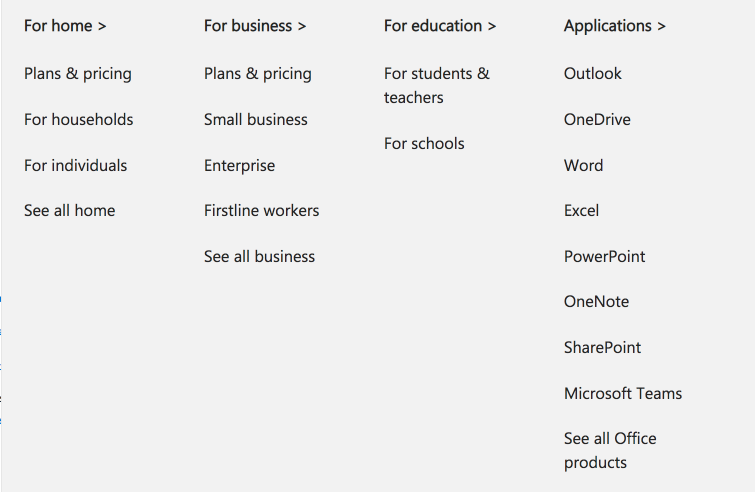
… or the home options…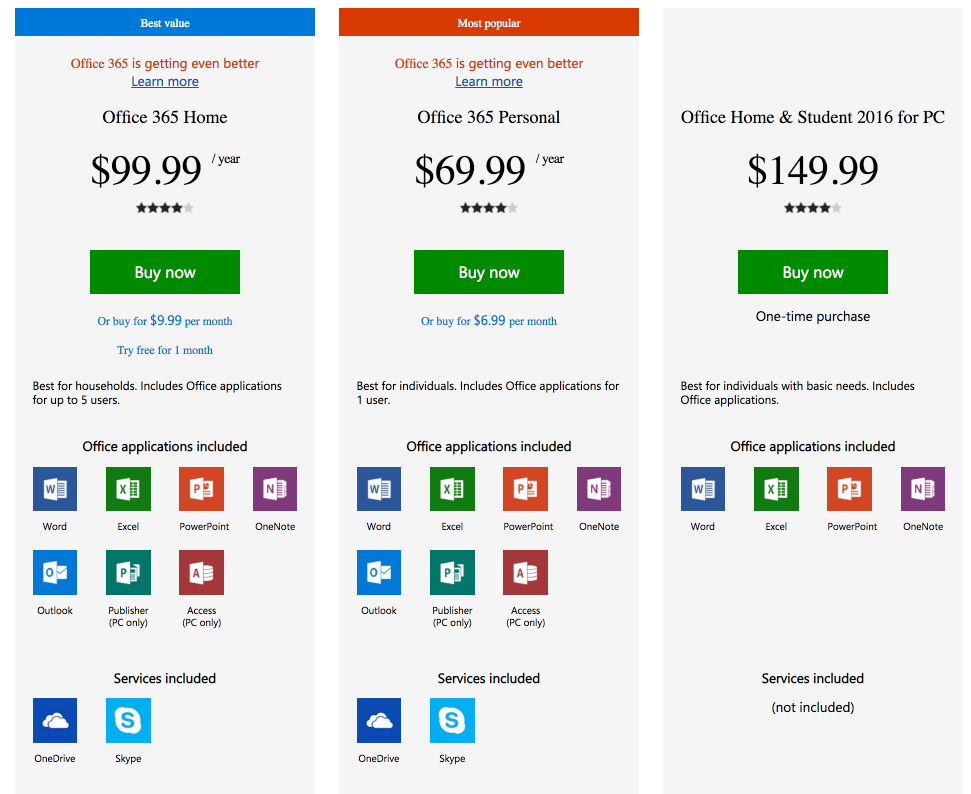
… or the business options…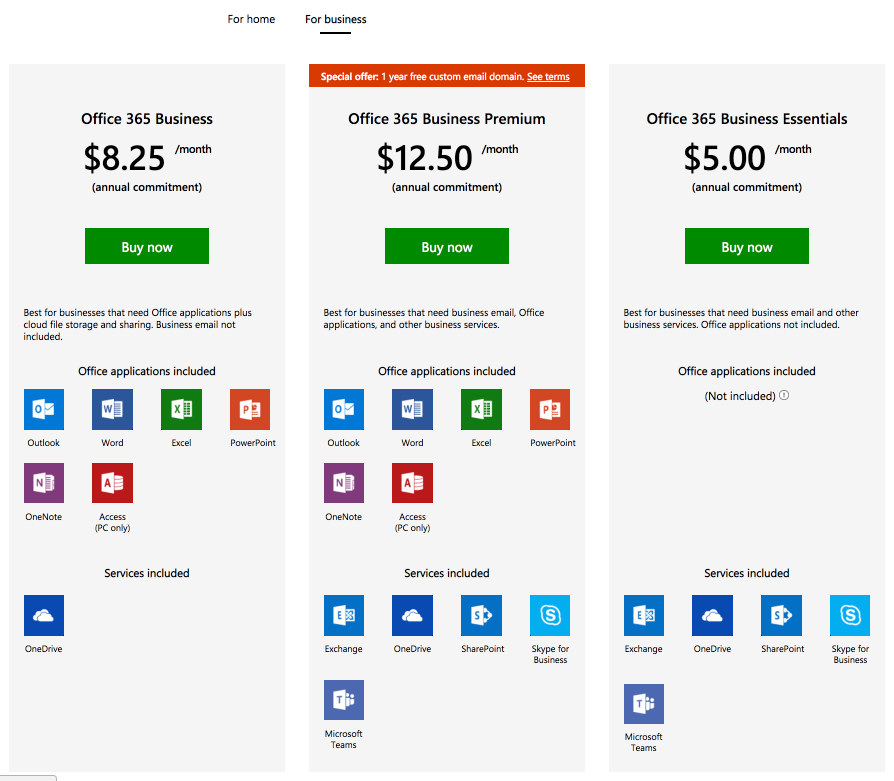
… or the enterprise options…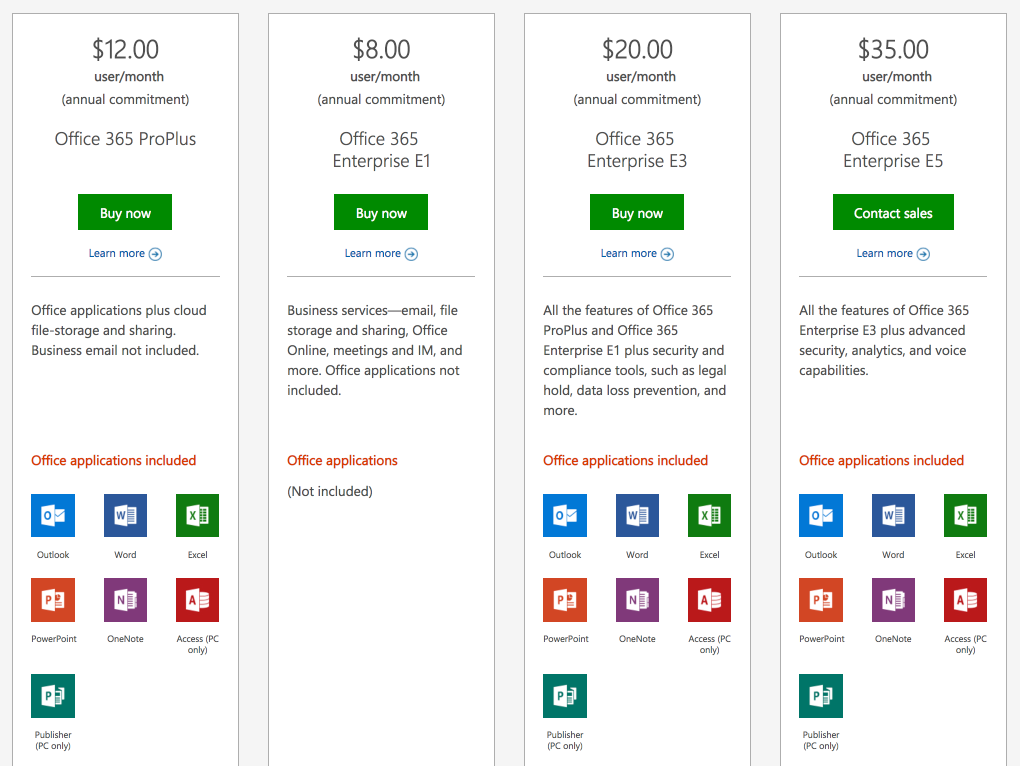
… Microsoft really wants you to pick a package that is tailored to their business model more than the solution is tailored to your needs as a business or consumer.
Stop the sales insanity! It doesn’t make the product better or more focused.
Microsoft should simplify their product line around pricing that is suite-based and includes all the tools that you can reasonably offer with an online interface. If you want to include a free tier, feel free. Getting users to buy into using Microsoft Office at home makes a lot of sense for getting them to buy into the product in their business.
A truly SaaS-first product should focus on its API to increase interoperability. You should be able to access every major feature in online software even if there is a desktop version. If this is not possible, cut back on features.
Office is far too bloated at this point. I see far more examples of poorly-crafted and inaccessible documents made with Word and Powerpoint and Publisher than cleverly-used advanced features.
Improve the online editing experience
Would you like to download the software or use it online—well, Microsoft would really like you to use the installed softare even if you are using it with their online account offering.

Why do we even need options for editing in the online experience? Just let me edit and get out of my way?
Simplify your product line
Why is the experience of OneDrive, Sharepoint, and Teams different? Depending on which of these tools are used, your experience of “sharing” a document for collaboration is completely different. Make a decision on the direction Microsoft wants to take and stick with improving that experience for your software as a service users.
What is the advantage of splitting development between Skype for Business (a poorly executed rebranding of Lync)?
Microsoft should pick one name for file synchronization and stick with it. They should make it clear how much each account has used and make it particularly easy to share within and outside an organization.
Optimize revisioning for collaboration
Whether Microsoft intends it or not, their platform encourages users to create revision after revisions in shares and directories resulting in files like \some-share\some-crazy-directory-structure\some-document-name_rev22_final_bob.docx. My favorite is when you have revisions from three different collaborators that are all labeled “final”.
Semantic versioning could be a solution, but that still means duplicating everything in the document and tracking which version of the document is currently the latest.
Here’s the thing, you don’t need to change the label of your file if you software exposes the revisioning layer in a simple and understandable way.
Track changes was revolutionary for providing this experience—thank you, Microsoft!
Microsoft made track changes the default go to for redlining documents in the business world. Now, they should optimize for track changes to feel more like the Google equivalent with suggestions that can have comments and resolution. Google truly improved this foundational productivity feature.
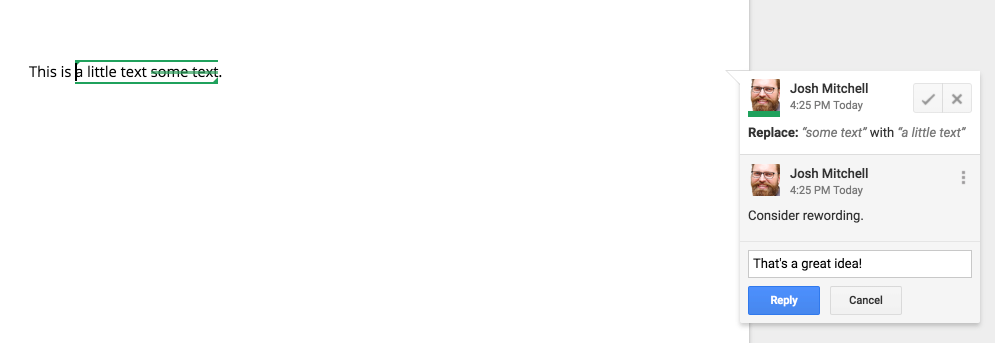
Google’s approach is currently collaboration at it’s best.
Microsoft should feel free to steal back Google’s innovation—assuming patent law allows. It is kinda how this whole software as a service thing works. Am I right?
Storage should be integrated with the cloud and seamless
Storage is not adequately integrated in the Microsoft world. OneDrive is buggy and confusing compared to Dropbox, Box, or even Google Drive. Sharepoint seems to be closed to only your organization—unless you expose it as FTP?!—which I suppose is good if you are trying to protect documents, but it is all or nothing for users. There are no solid ways to share with contractors and partner organizations outside of your organization’s domain.
Office365 was supposed to compete with G Suite, but it really doesn’t allow for any of the ease of search or web-only storage that makes G Suite so easy to roll out and support.
Dropbox may have the best example of seemless sharing of all the storage options. Sync is about the same across each of these solution, but Dropbox allows the publishing of a space where others can download the documents you’ve shared publicly. It’s a nice touch that this can be used to help extend access to vendors and collaborators outside of your organization that do not need editing rights.
Offer a free tier to build a base
Perhaps the most compelling feature of Google’s suite of productivity tools is that you can have them for free—with a pretty decent amount of storage included.
Office365 needs a tier of users that get all the benefits of Word and Excel without having to plunk down a chunk of change. $99 a year is a lot to get a ton of features that you’ll never need with a poorer email experience and sad collaboration tools. To compete, Microsoft is going to need to try and level the playing field to gain new users.
Not about good or bad
Microsoft is not “bad” or “good”, but they need to improve and keep up with the current demands of consumers and businesses.
I am not a Microsoft hater. While it is true that I prefer MacOS or Linix, I’m actually a huge fan of a couple of Microsoft’s products. Visual Studio Code is one of the most impressive IDEs that I’ve ever used. (And yes, I have used a lot over the years.) OneNote is an amazing note taking tool on both desktops and tablets. I was once a power user in every sense on a Windows PC. I cut my teeth developing in a Microsoft-centric world.
Microsoft is not “bad” or “good”, but they need to improve and keep up with the current demands of consumers and businesses
Microsoft has the resources to be better.
But… I worry about products Microsoft has ruined
Skype is nowhere near the product it was before Microsoft took over. Yammer was also better before Microsoft took the wheel.
Side note: please, please for the love of all that is sacred and open source, don’t ruin GitHub!
My hope
Microsoft—and I speak to you as if you are anything close to a single entity—please get this right. Give us options and continue to create a competitive market with Google. Frankly, if you don’t, other companies are unlikely to do so. Worse, you will continue to see your marketshare diminish and consumers will be left with only a monopoly. Sound familiar? It has happened before.